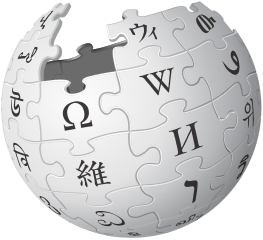Philosophically, superconducting qubits are good because superconductivity is macroscopic.
It is fun to see that the representation of information in the QC basically uses an LC circuit, which is a very classical resonator circuit.
As mentioned at en.wikipedia.org/wiki/Superconducting_quantum_computing#Qubit_archetypes there are actually a few different types of superconducting qubits:
- flux
- charge
- phase
Input:
Quantum Computing with Superconducting Qubits by Alexandre Blais (2012)
Source. - youtu.be/uPw9nkJAwDY?t=293 superconducting qubits are good because superconductivity is macroscopic. Explains how in non superconducting metal, each electron moves separatelly, and can hit atoms and leak vibration/photos, which lead to observation and quantum error
- youtu.be/uPw9nkJAwDY?t=429 made of aluminium
- youtu.be/uPw9nkJAwDY?t=432 shows the circuit diagram, and notes that the thing is basically a LC circuitusing the newly created just now Ciro's ASCII art circuit diagram notation. Note that the block on the right is a SQUID device.
+-----+ | | | +-+-+ | | | C X X | | | | +-+-+ | | +-----+ - youtu.be/uPw9nkJAwDY?t=471 mentions that the frequency between states 0 and 1 is chosen to be 6 GHz:This explains why we need to go to much lower temperatures than simply the superconducting temperature of aluminum!
- higher frequencies would be harder/more expensive to generate
- lower frequencies would mean less energy according to the Planck relation. And less energy means that thermal energy would matter more, and introduce more noise.6 GHz is aboutFrom the definition of the Boltzmann constant, the temperature which has that average energe of particles is of the order of:
- youtu.be/xjlGL4Mvq7A?t=138 superconducting quantum computer need non-linear components (too brief if you don't know what he means in advance)
- youtu.be/xjlGL4Mvq7A?t=169 quantum computing is hard because we want long coherence but fast control
Non-linearity is needed otherwise the input energy would just make the state go to higher and higher energy levels, e.g. from 1 to 2. But we only want to use levels 0 and 1.
The way this is modelled in by starting from a pure LC circuit, which is an harmonic oscillator, see also quantum LC circuit, and then replacing the linear inductor with a SQUID device, e.g. mentioned at: youtu.be/eZJjQGu85Ps?t=1655 Video "Superconducting Qubits I Part 1 by Zlatko Minev (2020)".
- requires intense refrigeration to 15mK in dilution refrigerator. Note that this is much lower than the actual superconducting temperature of the metal, we have to go even lower to reduce noise enough, see e.g. youtu.be/uPw9nkJAwDY?t=471 from Video "Building a quantum computer with superconducting qubits by Daniel Sank (2019)"
- less connectivity, normally limited to 4 nearest neighbours, or maybe 6 for 3D approaches, e.g. compared to trapped ion quantum computers, where each trapped ion can be entangled with every other on the same chip
This is unlike atomic systems like trapped ion quantum computers, where each atom is necessarily exactly the same as the other.
Superconducting qubits are regarded as promising because superconductivity is a macroscopic quantum phenomena of Bose Einstein condensation, and so as a macroscopic phenomena, it is easier to control and observe.
This is mentioned e.g. in this relatively early: physicsworld.com/a/superconducting-quantum-bits/. While most quantum phenomena is observed at the atomic scale, superconducting qubits are micrometer scale, which is huge!
Physicists are comfortable with the use of quantum mechanics to describe atomic and subatomic particles. However, in recent years we have discovered that micron-sized objects that have been produced using standard semiconductor-fabrication techniques – objects that are small on everyday scales but large compared with atoms – can also behave as quantum particles.
However superconducting qubits have a limit on how precise their parameters can be set based on how well we can fabricate devices. This may require per-device characterisation.
In Ciro's ASCII art circuit diagram notation, it is a loop with three Josephson junctions:
+----X-----+
| |
| |
| |
+--X----X--+Superconducting Qubit by NTT SCL (2015)
Source. Offers an interesting interpretation of superposition in that type of device (TODO precise name, seems to be a flux qubit): current going clockwise or current going counter clockwise at the same time. youtu.be/xjlGL4Mvq7A?t=1348 clarifies that this is just one of the types of qubits, and that it was developed by Hans Mooij et. al., with a proposal in 1999 and experiments in 2000. The other type is dual to this one, and the superposition of the other type is between N and N + 1 copper pairs stored in a box.
Their circuit is a loop with three Josephson junctions, in Ciro's ASCII art circuit diagram notation:
+----X-----+
| |
| |
| |
+--X----X--+When half the magnetic flux quantum is applied as microwaves, this produces the ground state:where and cancel each other out. And the first excited state is:Then he mentions that:
- to go from 0 to 1, they apply the difference in energy
- if the duration is reduced by half, it creates a superposition of .
Used e.g. in the Sycamore processor.
The most basic type of transmon is in Ciro's ASCII art circuit diagram notation, an LC circuit e.g. as mentioned at youtu.be/cb_f9KpYipk?t=180 from Video "The transmon qubit by Leo Di Carlo (2018)":
+----------+
| Island 1 |
+----------+
| |
X C
| |
+----------+
| Island 2 |
+----------+youtu.be/eZJjQGu85Ps?t=2443 from Video "Superconducting Qubits I Part 1 by Zlatko Minev (2020)" describes a (possibly simplified) physical model of it, as two superconducting metal islands linked up by a Josephson junction marked as The circuit is then analogous to a LC circuit, with the islands being the capacitor. The Josephson junction functions as a non-linear inductor.
X in the diagram as per-Ciro's ASCII art circuit diagram notation:+-------+ +-------+
| | | |
| Q_1() |---X---| Q_2() |
| | | |
+-------+ +-------+Others define it with a SQUID device instead: youtu.be/cb_f9KpYipk?t=328 from Video "The transmon qubit by Leo Di Carlo (2018)". He mentions that this allows tuning the inductive element without creating a new device.
Calibration of Transmon Superconducting Qubits by Stefan Titus (2021)
Source. Possibly this Keysight which would make sense.But seriously, this is a valuable little list.
The course is basically exclusively about transmons.
The transmon qubit by Leo Di Carlo (2018)
Source. Via QuTech Academy.Circuit QED by Leo Di Carlo (2018)
Source. Via QuTech Academy.Single-qubit gate by Brian Taraskinki (2018)
Source. Good video! Basically you make a phase rotation by controlling the envelope of a pulse.About their qubit:
- alice-bob.com/2023/02/15/computing-256-bit-elliptic-curve-logarithm-in-9-hours-with-126133-cat-qubits/ Computing 256-bit elliptic curve logarithm in 9 hours with 126,133 cat qubits (2023). This describes their "cat qubit".
Behind The Tech : Cryostats by Alice&Bob
. Source. Showcasing their Bluefors dilution refrigerators. They are named after Asterix characters.The "AI" part is just prerequisite buzzword of the AI boom era for any project and completely bullshit.
According to job postings such as: archive.ph/wip/Fdgsv their center is in Goleta, California, near Santa Barbara. Though Google tends to promote it more as Santa Barbara, see e.g. Daniel's t-shirt at Video "Building a quantum computer with superconducting qubits by Daniel Sank (2019)".
Control of transmon qubits using a cryogenic CMOS integrated circuit (QuantumCasts) by Google (2020)
Source. Fantastic video, good photos of the Google Quantum AI setup!Built 2021. TODO address. Located in Santa Barbara, which has long been the epycenter of Google's AI efforts. Apparently contains fabrication facilities.
Started at Google Quantum AI in 2014.
Has his LaTeX notes at: github.com/DanielSank/theory. One day he will convert to OurBigBook.com. Interesting to see that he is able to continue his notes despite being at Google.
Timeline:He went pretty much in a straight line into the quantum computing boom! Well done.
- 2015: joined Google as a Google Quantum AI employee
- 2010: UCSB Physics PhD. His thesis was "Fault-tolerant superconducting qubits" and the PDF can be downloaded from: alexandria.ucsb.edu/lib/ark:/48907/f3b56gwb.
- 2006: UCSB Physics undergrad. In 2008 he joined John Martinis' lab during his undergrad itself.
Timeline:
- 2020: left Google after he was demoted apparently, and joined Silicon Quantum Computing.
- 2014: he and the entire lab were hired by Google
This is a good read: quantumai.google/hardware/datasheet/weber.pdf May 14, 2021. Their topology is so weird, not just a rectangle, one wonders why! You get different error rates in different qubits, it's mad.
2024 public presentation of their then new chip.
The term "IBM Q" has been used in some promotional material as of 2020, e.g.: www.ibm.com/mysupport/s/topic/0TO50000000227pGAA/ibm-q-quantum-computing?language=en_US though the fuller form "IBM Quantum Computing" is somewhat more widely used.
They also internally named an division as "IBM Q": sg.news.yahoo.com/ibm-thinks-ready-turn-quantum-050100574.html
Homepage: meetiqm.com/
OpenSuperQ intro by Quantum Flagship (2021)
Source. Their main innovation seems to be their 3D design which they call "Coaxmon".
Funding:
- 2023: $1m (869,000 pounds) for Japan expansion: www.uktech.news/deep-tech/oqc-funding-japan-20230203
- 2022: $47m (38M pounds) techcrunch.com/2022/07/04/uks-oxford-quantum-circuits-snaps-up-47m-for-quantum-computing-as-a-service/
- 2017: $2.7m globalventuring.com/university/oxford-quantum-calculates-2-7m/
Founding CEO of Oxford Quantum Circuits.
As mentioned at www.investmentmonitor.ai/tech/innovation/in-conversation-with-oxford-quantum-circuits-ilana-wisby she is not the original tech person:Did they mean Oxford Sciences Enterprises? There's nothing called "Oxford Science and Innovation" on Google. Yes, it is just a typo oxfordscienceenterprises.com/news/meet-the-founder-ilana-wisby-ceo-of-oxford-quantum-circuits/ says it clearly:
she was finally headhunted by Oxford Science and Innovation to become the founding CEO of OQC. The company was spun out of Oxford University's physics department in 2017, at which point Wisby was handed "a laptop and a patent".
I was headhunted by Oxford Sciences Enterprises to be the founding CEO of OQC.
oxfordquantumcircuits.com/story mentions that the core patent was by Dr. Peter Leek: www.linkedin.com/in/peter-leek-00954b62/
Forest: an Operating System for Quantum Computing by Guen Prawiroatmodjo (2017)
Source. The title of the talk is innapropriate, this is a very basic overview of the entire Rigetti Computing stack. Still some fine mentions. Her name is so long, TODO origin? She later moved to Microsoft Quantum: www.linkedin.com/in/gueneverep/. Articles by others on the same topic
Superconducting quantum computing is a type of quantum computing that uses superconducting materials to create qubits, the fundamental units of quantum information. Superconductors are materials that exhibit zero electrical resistance when cooled below a certain temperature, allowing them to carry electrical current without energy loss. In superconducting quantum computers, qubits are typically formed using Josephson junctions, which are thin insulating barriers sandwiched between two superconducting materials.





